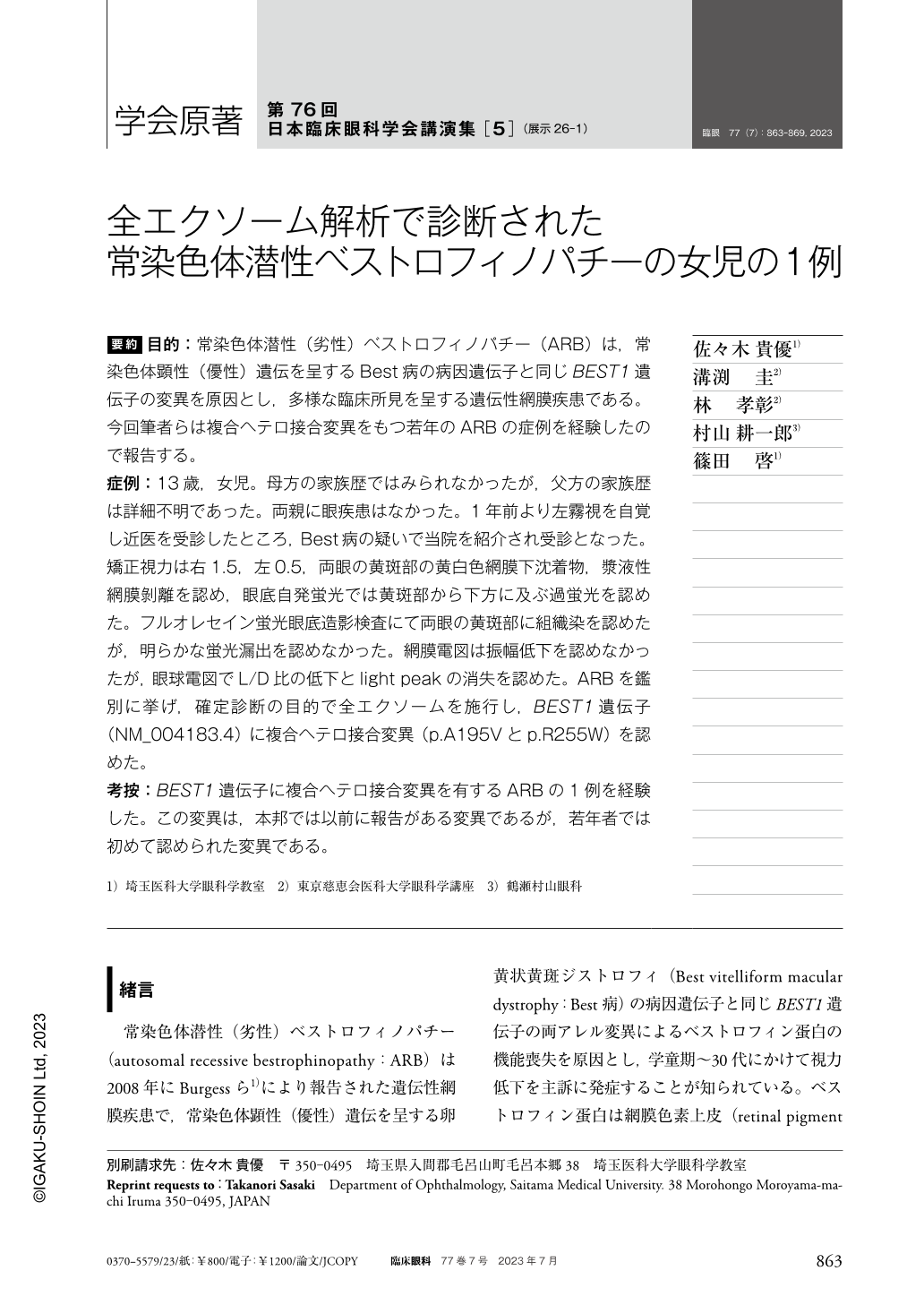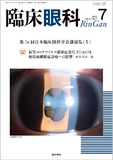Japanese
English
- 有料閲覧
- Abstract 文献概要
- 1ページ目 Look Inside
- 参考文献 Reference
要約 目的:常染色体潜性(劣性)ベストロフィノパチー(ARB)は,常染色体顕性(優性)遺伝を呈するBest病の病因遺伝子と同じBEST1遺伝子の変異を原因とし,多様な臨床所見を呈する遺伝性網膜疾患である。今回筆者らは複合ヘテロ接合変異をもつ若年のARBの症例を経験したので報告する。
症例:13歳,女児。母方の家族歴ではみられなかったが,父方の家族歴は詳細不明であった。両親に眼疾患はなかった。1年前より左霧視を自覚し近医を受診したところ,Best病の疑いで当院を紹介され受診となった。矯正視力は右1.5,左0.5,両眼の黄斑部の黄白色網膜下沈着物,漿液性網膜剝離を認め,眼底自発蛍光では黄斑部から下方に及ぶ過蛍光を認めた。フルオレセイン蛍光眼底造影検査にて両眼の黄斑部に組織染を認めたが,明らかな蛍光漏出を認めなかった。網膜電図は振幅低下を認めなかったが,眼球電図でL/D比の低下とlight peakの消失を認めた。ARBを鑑別に挙げ,確定診断の目的で全エクソームを施行し,BEST1遺伝子(NM_004183.4)に複合ヘテロ接合変異(p.A195Vとp.R255W)を認めた。
考按:BEST1遺伝子に複合ヘテロ接合変異を有するARBの1例を経験した。この変異は,本邦では以前に報告がある変異であるが,若年者では初めて認められた変異である。
Abstract Purpose:Autosomal recessive bestrophinopathy(ARB)is an inherited retinal disease with diverse clinical manifestations caused by mutations in the BEST1 gene, which is also responsible for the autosomal dominant Best's disease. In this study, we report the case of a young patient with ARB associated with compound heterozygous BEST1 mutations.
Case:A 13-year-old girl with blurred vision in her left eye, visited local clinic 1 year ago and was referred on suspicion of Best's disease. She had no significant maternal family history and unknowen paternal family history. Her parents had no ocular disease. Her corrected visual acuity was 1.5 in the right eye and 0.5 in the left eye. Funduscopy showed yellowish-white subretinal deposits and serous retinal detachment in both eyes and hyperfluorescence in the macula extending to inferior macula to fundus autofluorescence images. Fluorescein angiography showed tissue staining in both maculae but no obvious fluorescence leakage. The amplitudes in electroretinograms were within normal range, but decreased L/D ratio and the absence of light peak were detected through electrooculography. Whole exome sequencing was performed to confirm the diagnosis of ARB, which revealed compound heterozygous mutations(p.A195V and p.R255W)in the BEST1 gene(NM_004183.4).
Conclusions:We encountered an ARB patient with compound heterozygous BEST1 mutations. Although both mutations have been previously reported in one Japanese ARB patient, this is the first case of a young patient in whom both BEST1 mutations were identified.

Copyright © 2023, Igaku-Shoin Ltd. All rights reserved.


